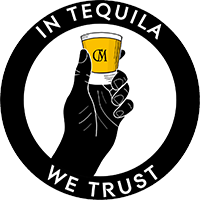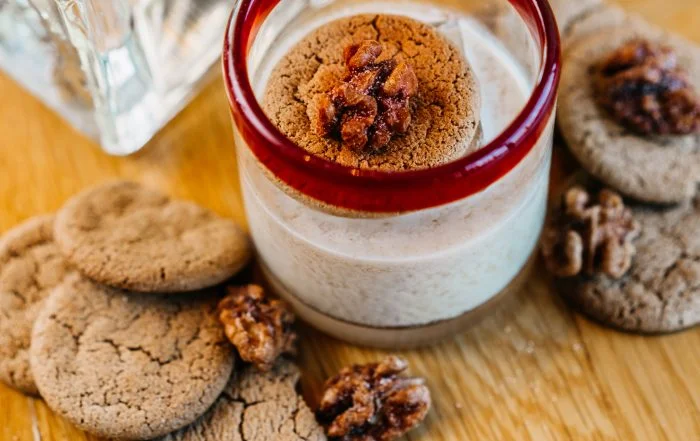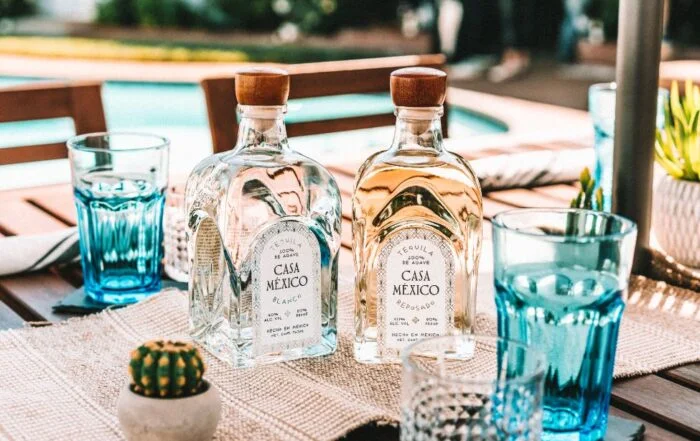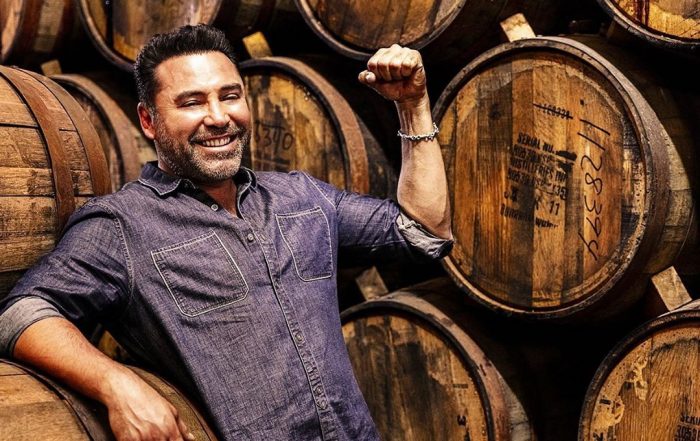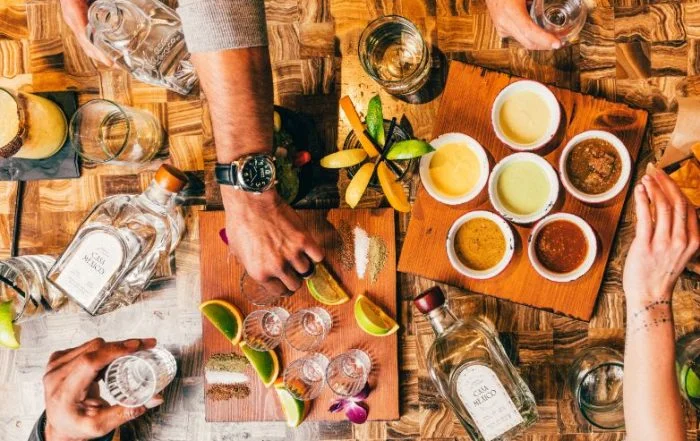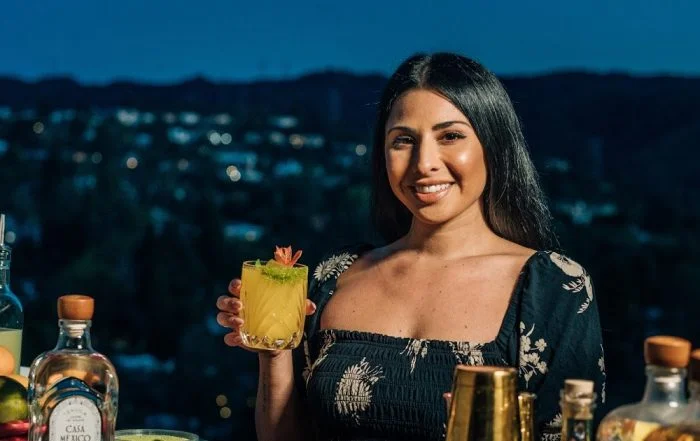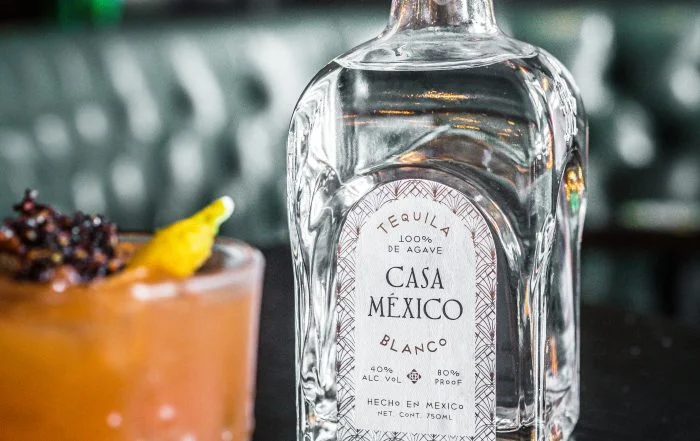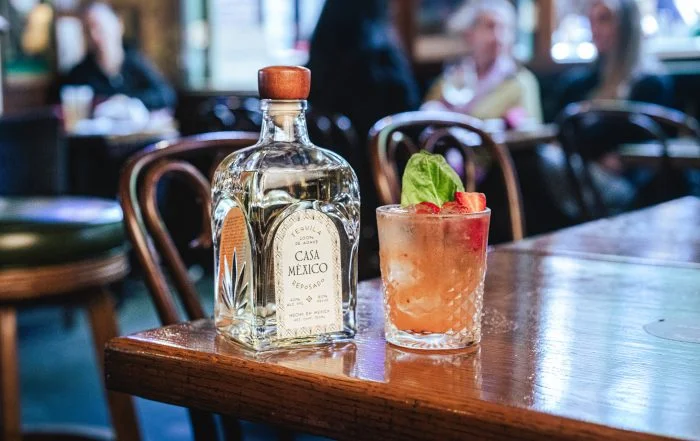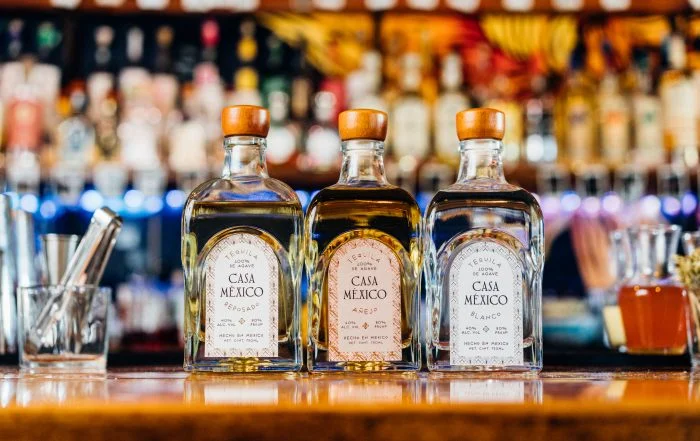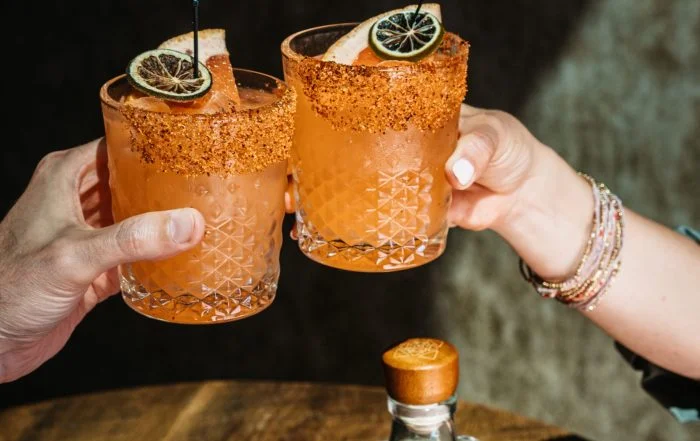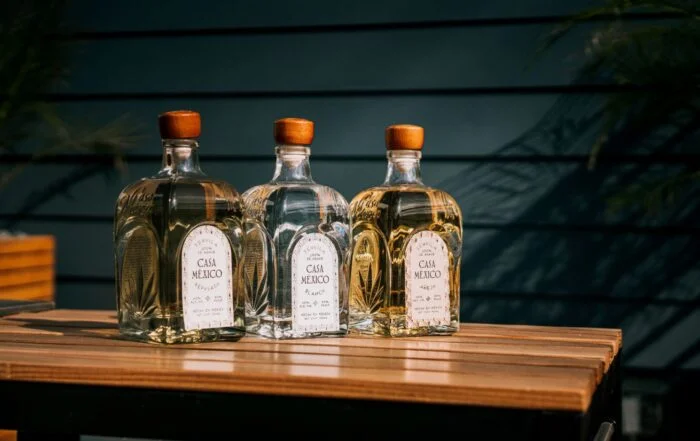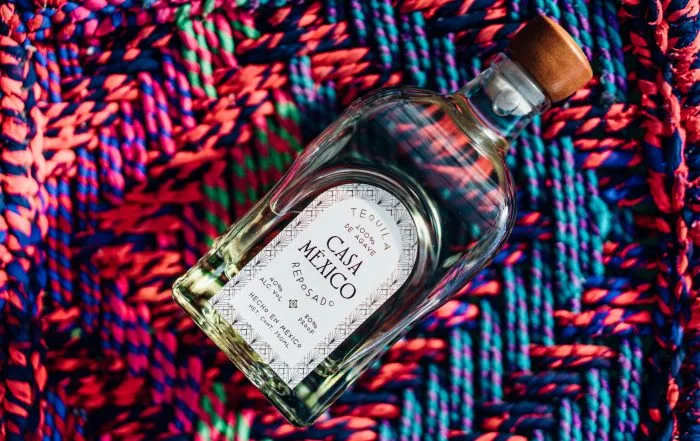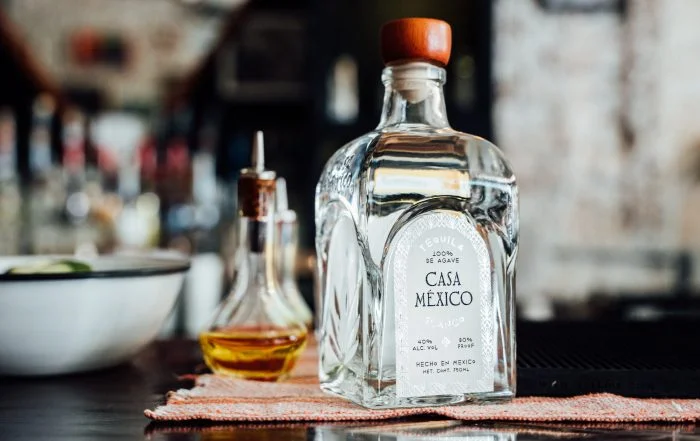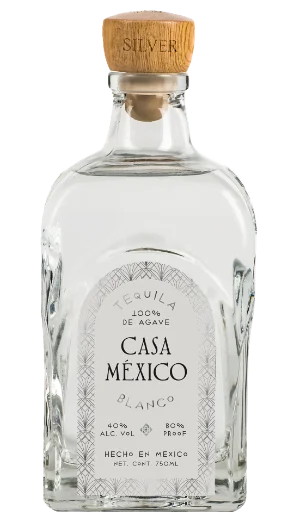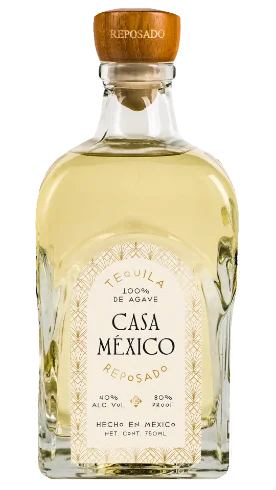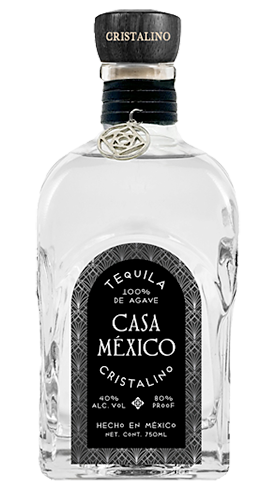How is Tequila Made? Learn How in These 7 Comprehensive Steps
Casa México makes its authentic tequila from blue agave, a succulent plant found in Mexican regions. We can break down tequila production into seven steps: harvesting, cooking, extraction, fermentation, distillation, aging, and bottling. Every effort is regulated by the Consejo Regulador del Tequila, ensuring that general guidelines are followed to guarantee maximum quality. Each distillery has its agave source, processes, quality control, and techniques to perfect and refine the taste.
Step 1: Harvesting
The growing, maintaining, and harvesting of the agave plant continues to be a physical effort based on centuries-old techniques passed down from generation to generation. Casa México’s tequila is estate grown and distilled using plants harvested exclusively from our agave fields. Jalisco’s temperate climate allows cold ocean air currents to interact with the desert’s heat to enhance the agave’s quality and complexity, allowing them to flourish. Our plants spend eight years maturing before moving through the harvesting process. Casa México makes its tequila from 100% Blue Agave Tequilana Weber.
The “Jimador,” also known as the harvester, removes the agave leaves with a sharp curved tool called a Coa. They trim over 200 leaves surrounding the agave’s heart (or piña) until the whole heart is extracted from the ground because the piña is the only part of the agave plant used to make tequila. Fully grown piñas can weigh from a hefty 80 pounds up to a whopping 300 pounds. Although size doesn’t matter, the agave piña size is not nearly as important as its sugar content. As the agave gets older, the longer the piña accumulates, and the starches convert into fermentable sugars. It takes about 15 pounds of piñas to produce one liter of tequila. After we harvest the tequila, we cook it.
Step 2: Cooking
When the piña is cooked, steam injection using traditional brick ovens or stainless steel autoclaves activates a chemical process within the piña that converts complex carbohydrates into simple fermentable sugars. Cooking the piña softens it, making sugar extraction easier. And once it’s softened, we can begin the extraction process.
READ > In Pursuit: The Perfect Margarita
Step 3: Extraction
After we cook the piñas, we transport them to have the sugar extracted at a milling area. The cooked piñas are smashed to release the juice, or “aguamiel,” that is then fermented. The traditional method is to process the piñas with a large grinding wheel powered by tractors, oxen, or mules within a circular pit, also known as a “tahona.” Modern distilleries use a machine to separate the juices from the fiber. Once the piñas are processed, they are cleansed with water and strained to remove the juices. Then we can begin fermenting the piñas.
Step 4: Fermentation
Simply put, fermentation turns sugar into alcohol. Regarding making tequila, this takes place within large wooden vats or stainless steel tanks. Traditionally, fermentation was controlled by adding the yeast that naturally grows on the agave leaves. Now, distilleries use a cultivated form of wild yeast. Depending on the method used, it can take anywhere from seven to 12 days. Once the tequila has fully fermented, we can begin the distillation process.
Step 5: Distillation
Distillation is a very scientific process. But essentially, it’s when the alcohol becomes concentrated by using heat and steam pressure. Typically, we do this within distillation towers or stainless steel pot stills. Some tequilas are distilled three times, but most are distilled only twice, including our Casa México Tequila. The first distillation is called “deztrozamiento” or “smashing.” This takes a couple of hours and produces a liquid known as “ordinario” with an alcohol level of around 20%. The second step is known as “rectification.” This process can take about three or four hours and produces a liquid with an alcohol level near 55%. After the second distillation, the tequila is considered “blanco,” or blanco tequila. When we start distinguishing between blanco tequila, reposado tequila, and añejo tequila, that is where aging (step 6) comes into play.
Fun Fact: Casa México Tequila is slow-baked in clay ovens, naturally fermented, and double-distilled in stainless steel pot stills; our finished product presents as a remarkably smooth crystal-clear spirit. Each sip reveals graceful earth tones, followed by crisp, sweet citrus, finishing with hints of spice. It is suitable both for sipping or as the foundation for your favorite tequila-based cocktail.
Step 6: Aging
Nearly all aging containers are either French or American white oak barrels. Typically, they are used to age bourbon or even Jack Daniels. Reposados age from two to 12 months while añejos age for one to three years. Extra añejos are aged for more than three years. As the tequila ages longer, the more color, flavors, and tannins it will exude. Other factors affecting tequila’s flavor are the barrel’s age, what the barrel was previously used for, and if the barrel has been burnt or toasted for a smoky, robust flavor.
If you want to learn more about the different types of tequila, head over to our blog: Understanding the Differences in Types of Tequila
Fun Fact: At Casa México, our finished reposado product rests for a minimum of six months in new American White Oak barrels. This transformation allows the product to obtain its exceptional taste and golden hue. Our finished añejo rests for a minimum of 12 months in new American White Oak barrels at the same time. This allows the añejo to obtain its exceptional taste and caramel hue through natural processes.
Once the tequila has appropriately aged, we can bottle the tequila and send it to a liquor store near you! Or you can buy tequila online here.
Step 7: Bottling
To be considered tequila, it must be produced and bottled in five Mexican states: Jalisco, Guanajuato, Nayarit, Michoacán, and Tamaulipas. We grow our agave and produce our tequila in Jalisco, where tequila originated and industry standards must be met. Other states are only allowed to grow blue agave in defined and small regions. Every 100% agave tequila produced must be bottled in the designated Mexican regions and must show on their labels “Hecho en Mexico / Made in Mexico.” Any non-100% agave tequila, also known as “mixtos,” can be bottled and sold anywhere else throughout the world.
Fun Fact: There is a city in Jalisco named Tequila. It sounds like an excellent place for a vacation!
Did this answer your question, “How is Tequila Made?”
We hope we broke down tequila production for you in these seven steps. Many environmental and human factors give each brand of tequila its own unique and distinctive taste.
Casa México Tequila is honored to partner with the Hacienda Capellanía, a family-owned and operated establishment spanning five generations with over 100 years of experience growing agave and distilling tequila.
Bonus: Difference Between Tequila and Mezcal?
Now that you know how tequila is made, another question may arise: What is the difference between tequila and mezcal? The liquors typically go hand in hand as spirits originating from Mexico and being made from the blue agave plant. That is about as far as the similarities between these two go. Here are some of the key differences between the two.
All tequilas are considered mezcals, but all mezcals are not considered tequilas. Similar to how bourbon and scotch are both whiskey types, tequila is technically a type of mezcal. Mezcal is defined as any agave-based liquor, according to spirits writer John McEvoy. Tequila is an agave-based liquor that is only made in Mexico’s specific regions and must only be made of the bue agave plant. On the other hand, mezcal can be made from more than 30 different agave types. The most common agave varieties used for mezcal are arroqueño, tobaziche, tepeztate, tobalá, and espadín, which accounts for up to 90% of mezcal and is the most common agave.
Tequila and mezcal also generally come from different regions of Mexico, although there is some overlap. Tequila is produced in five places: Guanajuato, Michoacán, Tamaulipas, Nayarit, and Jalisco, which is where the actual town of Tequila is located. Mezcal can be produced in nine different areas of Mexico. These areas include Durango, Guanajuato, Guerrero, San Luis Potosi, Tamaulipas, Zacatecas, Michoacán, Puebla, and Oaxaca, which is where over 85% of all mezcal is made.
Another difference is how they are distilled. Tequila is produced by steaming the agave inside industrial ovens before being distilled two or three times in copper pots. Alternatively, mezcal is cooked inside pits in the ground lined with lava rocks and filled with wood and charcoal before being distilled in clay pots. Some large-scale mezcal producers have switched to more modern methods. Simultaneously, craft mezcal makers continue to use this more traditional method, which is where you get the smoky flavor commonly associated with mezcal.
The last, most apparent difference between tequila and mezcal is how they are labeled. After the distillation process, tequila and mezcal are both aged inside oak barrels. The aging categories of the two spirits are defined slightly differently when they are labeled. For example, tequila comes labeled in three varieties: blanco, reposado, and añejo. Mezcal is also categorized into three slightly different groups by age, including joven, reposado, and añejo.
Next time you’re out with your friends, you can impress them with your knowledge as a real connoisseur of how tequila is made. Then you can explain what the difference between tequila and mezcal is, something only a true tequila fanatic would be able to tell you.

Feeling Thirsty Yet? Buy Tequila Online
You can buy tequila online through our website https://www.casamexicotequila.com/order-online/. Whether you love Casa México’s blanco, reposado, or añejo tequila, you can have it shipped directly to your home. If you prefer to go and purchase tequila in a liquor store near you, visit this link: https://www.casamexicotequila.com/store-locator/
Or Find Our Tequila in a Liquor Store Near You
As we mentioned above, you may not be patient enough to wait for our tequila to get shipped directly to you. If that’s the case, feel free to use our online store locator to find a liquor store near you that offers Casa México Tequila. Visit this link and type in your ZIP code to begin your search.
Can I Buy Tequila Online?
You may purchase ours through our website.
Where Can I Buy Tequila Online?
You can buy tequila online at our website.
Best Añejo
When it comes to the best añejo tequila, Casa México’s añejo is a strong contender. Slow-baked in clay ovens, naturally fermented and double-distilled in stainless steel pot stills, our finished product then rests for a minimum of 12 months in new American White Oak barrels. This transformation allows the product to obtain its exceptional taste and caramel hue through natural processes.
Tequila aficionados appreciate the initial caramel notes and subsequent smooth oak flavors produced by this uniquely nuanced spirit. This expression is best served neat or with a minimal amount of ice.
You may buy the best añejo online here: https://www.casamexicotequila.com/order-online/.
Tequila Online
If you’re sipping tequila at home (or wish you were), you may enjoy the option to purchase Casa México Tequila online. Use our website to access Drizly and Reserve Bar to purchase our tequila at your convenience. Visit this link to start your order: https://www.casamexicotequila.com/order-online/.
Buy Liquor Online
If you’re looking to buy liquor online, chances are you’re considering tequila (we are!). Casa México Tequila is available to purchase here https://www.casamexicotequila.com/order-online/ through Drizly and Reserve Bar. We offer blanco, reposado, and añejo tequila.
- Learn more about Casa México Blanco
- Learn more about Casa Mexico Reposado
- Learn more about Casa Mexico Anejo
Buy Tequila Online – Casa México Blanco Tequila
If you’re looking at Casa México’s Blanco Tequila, you can buy tequila online through this page. Casa México’s Blanco Tequila is the perfect tequila for your favorite tequila cocktails, a deliciously refreshing margarita, or enjoyed straight up with a salted rim and lime wedge.
Buy Tequila Online – Casa México Añejo Tequila
If you’re looking at Casa México’s Añejo Tequila, you can buy tequila online through this page. We make our award-winning añejo from only the finest blue agave picked from the mineral-rich, deep volcanic soils of the highlands in Jalisco, Mexico.
Buy Tequila Online – Casa México Reposado Tequila
If you’re looking at Casa México’s Reposado Tequila, you can buy tequila online through this page. The sweet and subtle ginger notes followed by a slight oak finish and hints of cinnamon delightfully awaken your palate. It’s suitable for sipping or as the foundation for your favorite tequila-based cocktail.
Buy Tequila Online – Order Tequila Online
If you’re thirsty for Casa México Tequila, you can buy it online through this page. Now more than ever with COVID-19, we prioritize your safety and are happy to offer you a safe and affordable way to buy our tequila online.
LATEST BLOG
Celebrate National Margarita Day with Casa México Tequila
Here at Casa México we’re getting ready to celebrate one of our most favorite days of the year: National Margarita Day. Every February 22nd we break out our finest margarita glasses, cue up the limes and line up our premium tequilas. It’s like we were born for this day.
888.411.9530 | [email protected] | Copyright 2024 Casa Mexico Tequila. All Rights Reserved. | Privacy Policy | California Privacy Policy | Accessibility Statement
888.411.9530 | [email protected] | Copyright 2024 Casa Mexico Tequila. All Rights Reserved. | Privacy Policy | California Privacy Policy | Accessibility Statement
